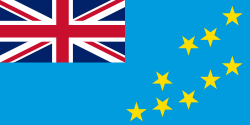 | |
| Geography | |
|---|---|
| Location | South Pacific |
| Coordinates | 7°27′S178°40′E / 7.450°S 178.667°E |
| Total islands | 1 |
| Administration | |
| Demographics | |
| Population | 52 |
Temotu is an islet of Vaitupu in Tuvalu. [1] [2] Temotu village which has a current population of 52 inhabitants resides on the islet. The average elevation of Temotu Village is 1 meter above sea level. [3]

